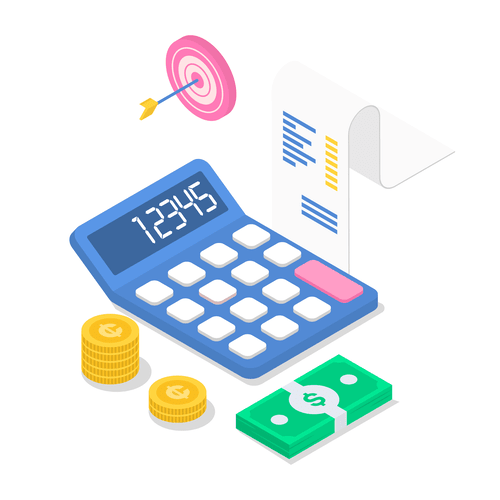Having trouble getting an estimate for your SaaS development cost because there are way too many variables to consider? Don’t worry we’ve all been there. Here’s an extensive guide that will help you account for factors such as features, architecture, scalability, and more to help you make an educated guess!
Reportedly, the SaaS market is expected to grow at a promising 18.5% CAGR to reach an overall market worth of around $462.94 Billion by the year 2028. So it comes as no surprise that approximately 80% of companies worldwide use at least one SaaS-based software in their day-to-day operations.
Despite its popularity and so many iterations, every SaaS application is unique in its own way. This is because SaaS application development offers a high level of flexibility allowing businesses to structure their SaaS model with the exact specifications they need to optimize their pain points. Businesses can even tweak the scalability and list of features based on their in-house requirements, but how does this affect the SaaS development cost? Let’s find the answer in the next section.
Get a Quote for Your SaaS Project Today!
Key Factors That Determine the SaaS Development Cost
The cost of building a SaaS product can largely vary depending on your requirements from the solution model. Here’s a list of the key factors that you need to keep in mind while settling down on your final design and budget for the project:
.png)
1. Scalability of the Software
One of the first questions that a developer may ask you is “how many active users will be using the software initially?”. It is important to have an approximate idea of the number of active users for the software. As the scalability of the software directly affects the development time and cost of the project.
Small-scale SaaS software is faster and cheaper to develop when compared to large-scale SaaS, but it also supports a limited number of active users. In case you overestimate the number of users for your software solution it can bait you into spending more resources on the development of the software solution than necessary. At the same time, underestimating the volume of user base expansion will increase the number of server crashes as the SaaS model will be unable to withstand the spike in the number of concurrent users. Upscaling the software in such a situation will bring in additional expenditure on top of the initial cost of developing a SaaS platform, an unnecessary expense that could be easily avoided with proper planning.

2. UI/UX Design
Developing a SaaS application with a simple yet professional UI/UX design is not only less draining on the budget side, but also has a greater contribution towards the success of your application. An intuitive design of a SaaS model enhances user experience and thus, engagement, leading to better retention rates. This encourages the users to return to your application giving you additional opportunities to display your services & make more sales.
On the other hand, going overboard with the elements in a user interface steers away the users as it makes the interface look clumsy and unprofessional, while simultaneously increasing the SaaS product’s pricing during development.

3. Technologies Being Used
The cost of building a SaaS product can greatly vary depending on the technologies used for the development of the model. A sophisticated tech stack generally attracts the need for a professional team of developers meaning more money out of the client’s pocket. However, it is important to point out that the ROI on these tech stacks makes it worth taking the initial hit.
Along with the implementation of a sophisticated technology stack, the price of a SaaS application increases too (just like the ROI!). For example, to build advanced software that is functionally strengthened with technologies like:
- Artificial Intelligence
- Blockchain
- Internet of Things(IoT)
- Virtual/Augmented Reality
- Etc., you’ll obviously have to pay a few extra bucks than building a legacy software.

4. Security Levels
When Tim Berners-Lee said that – “data is a precious thing and will last longer than the systems themselves", it was a lesson for all entrepreneurs to value the security of their data over anything else. And with the increased number of hackers and security breaches making their way into the modern tech world, leveraging security standards has become a default requirement for businesses in order to safeguard their data, which is the valuable vault of their profit & reputation alike.
It is obvious that you’ll have to scale up the threshold of your budget to enforce high-level security for your SaaS applications. So, while you may save on your SaaS development cost by cutting corners with your business’s security standards, all it does is put your business at greater risk in the long run.

5. Customizations
Pretty straightforward, you have to pay additional costs to add custom features to your SaaS model that are exclusively developed for your business from scratch. Some people confuse this feature with the standard customizability and flexibility options that are available in an off-the-shelf SaaS product, but it’s not the same. These customizations include services such as adding bonus features to your software or creating personalized graphics for the application so that it matches the company’s pre-existing branding.
While some may consider the integration of customized features to be a luxury expense for the business, the same cannot be said for the integration of another SaaS tool. Let’s discuss it in detail in the next section.
API Integrations Affecting the Cost of SaaS Product Pricing
Integrating an API into your SaaS model is indeed significantly cost-effective compared to developing a specific back-end function from scratch. However, the budget for your SaaS product development highly varies depending on the number and type of APIs you plan on integrating. Here’s how:
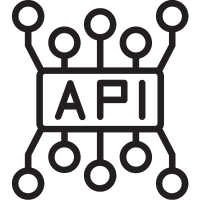
(a) Simple APIs
Simple APIs are the easiest to build as they are used to perform simple operations which means they usually have limited endpoints limiting the need for customization. These APIs commonly include:
- Authentication APIs
- Messaging APIs
- Social Media APIs
- Storage APIs
- Location APIs
In a situation where your SaaS model can fully operate with the integration of these APIs, the cost of building a SaaS product may not be affected by a noticeable amount.

(b) Semi-Complex APIs
The semi-complex APIs have a wider variety of features and are relatively harder to develop than simple APIs. These APIs require a decent amount of configuration to help them operate in a streamlined manner. Some of the common examples of a semi-complex API are:
- Weather APIs
- News APIs
- Translation APIs
Considering these APIs have a significant amount of features and have a complex framework you can expect the integration of these features to make a noticeable dent on your budget.

(c) Complex APIs
Complex APIs have a sophisticated interface that includes a significant amount of features along with a large number of operational endpoints. The development process of these APIs should be handled by SaaS professionals to avoid making the interface cumbersome. Some of these APIs include:
- Payment APIs
- Marketing APIs
- IoT APIs
The SaaS development cost for the integration of complex APIs is relatively higher compared to the prior categories due to the complexity of integrating them in a SaaS application.
However, the total cost of implementing either of the three categories would largely depend on the scope of the project, integration requirements, and several other factors. The approximate cost could range anywhere from a few thousand dollars to hundreds of thousands of dollars or even more in some cases.
All these fundas at hand, but estimating the budget for implementing APIs specific to your business can still be tricky. So get it right with expert’s hand holding, simply:
Talk to BinaryFolks SaaS Consultants
SaaS Software Development Cost Based on the Complexity of the Architecture
Architecture is one of the foundational elements during the development of a SaaS application. The complexity of the architecture will be one of the fundamental aspects of determining the SaaS app development cost. Let’s quickly take a gander at the different types of SaaS architecture and how their complexities impact the development cost:
(1) Micro SaaS
These SaaS applications are typically built to solve a specific pain point of your business. Since they are focused on specializing in a single operation their architecture is rather simple and takes a small amount of time to develop. With the help of a proper team, these applications can be developed within a few weeks, and the cost of developing them is typically on the lowest end of the SaaS application development range.
(2) Basic SaaS
As the name suggests, these SaaS solutions are commonly used by startups or small-scale businesses that require basic tools to get on with their day-to-day operations. These models are typically a bit higher on the complexity spectrum of the SaaS applications compared to the micro SaaS solutions.
The development of these applications can take anywhere between seven weeks to a few months depending on the additional specifications of each individual project. The SaaS software development costs for mobile SaaS are relatively higher than micro-SaaS, approximately $35,000 for the MVP development.
(3) Average SaaS
An average SaaS serves mid-sized companies and enterprises as these solution models provide a wider & complex range of features. The tools provided by an average SaaS are complicated when compared to the previously mentioned SaaS models. Let’s discuss the average SaaS model in detail with the help of its most commonly known category, vertical SaaS.
Vertical SaaS applications are developed with the goal to optimize a specific aspect of a business. This requires a high level of domain knowledge as the development of a vertical SaaS requires a significant amount of additional research and customization.
Now you may mix vertical SaaS up with micro SaaS as they may sound to serve a similar business issue, but that is not the case, let's clear things out. While both of them are designed to fulfill similar use cases of solving a specific business problem, a micro SaaS is mostly focused on fixing simple problems of a business, for example automating the scheduling of meetings for a real estate company. Whereas a vertical SaaS application can take care of the entire property management sector of that real estate firm.
Additionally, you can keep stacking additional features on top of a SaaS project based on the industry trends, which takes off the cap for an expected development time and price. However, if you really want an answer we can say the time to develop the SaaS MVP is somewhere in the vicinity of several months to a year in some cases. And the cost is commonly around $50,000-$60,000.
(4) Complex SaaS
The cost of developing a SaaS platform is highest while implementing a complex SaaS architecture as it offers multiple sophisticated functionalities. Large-scale industries and enterprise businesses opt for these SaaS applications to synchronize their workflow across multiple sectors of their business spread across various locations.
The time and resources required for the development of a complex SaaS application are generally the highest out of all other architectures. Depending on the specifications and requirements of your business the SaaS platform pricing can be anywhere between $100,000-$150,000.
These numbers are largely generalized to give you a vague idea of the price you will be paying for the development of your project. However, the actual price can largely vary depending on the factors we have discussed so far, so refer to these stats with a grain of salt.
Different SaaS Development Costs Based on the Type of Service Provider
Choosing the appropriate service provider for your SaaS development project depends on two main factors. Firstly, the sophistication of your model, and secondly the budget of your SaaS projects. Here’s a list that will help you pick the perfect type of service provider for your project:
[a] In-House Team
In this development format, you either ask your in-house team to develop the SaaS model for you or hire a team specifically for the development of the SaaS project.
Pros:
- Stakeholders can be available at the development site with the team. They can also track the progress of the operations whenever they want.
- Since your in-house developers will build the model from the ground up, they will have a thorough understanding of the nitty gritties of the software.
Cons:
- The pre-existing team might not have the technical expertise to develop a professional tier SaaS model and recruiting a team of developers can be an expensive process.
- Post development, the hired team of SaaS developers will be a liability for your business as the maintenance of the software does not require an entire team.
[b] Onshore or Local Service Providers
These are the local service providers belonging to your country, these are generally the technology experts who build SaaS applications for other companies on a contract basis. The SaaS product pricing depends on your requirements for the SaaS model and your deadline for the model to be up and running.
Pros:
- It is easier to collaborate with these service providers as both parties work in a similar time zone.
- As they have been working in the industry for years they can provide your SaaS model with a professional touch that your in-house team may fail to provide.
Cons:
- It costs higher than the in-house development method as they charge higher prices for the expertise that they bring to the table.
- In the case of an hourly payment system, every new issue will drastically shift the dynamics of the budget.
[c] Offshore Service Providers
Offshore service providers are similar to local service providers in terms of expertise and experience. However, they belong to a different part of the world where the same services are provided at a cheaper cost.
Pros:
- Outsourced service models provide you with the best value for money as they have cheaper development costs but provide similar expertise as your local service providers.
- Outsourcing developers take full responsibility for the development of your project and the security of your business data. This creates a secure development environment and encourages you to focus on other strategic plans for your business.
- Being an outsourcing-based company, we provide a transparent SaaS development procedure, so even though your team is not physically participating in the development, they will be informed about the progress at frequent intervals.
Cons:
- Different time zones may hinder the collaboration between the development teams, however, our developers are available 24/7 to discuss any issues that the in-house development team may have.
[d] Freelancers
These are individuals with significant expertise in various technologies across the SaaS application development domain. These individuals are generally hired to develop small-scale projects with a lower SaaS development cost.
Pros:
- Freelancers charge the lowest for their services as they are working individually.
- Discussing additional customizations & issues related to the development is easier.
Cons:
- The limited scope of projects as the development of SaaS projects with higher complexity requires extensive efforts which cannot be expected from an individual.
- Freelancers often work on multiple projects at once, so you might have to sit through a slow development process.
Post-Deployment SaaS Operating Expenses
The post-deployment expenses refer to the additional expenses you need to account for after the SaaS application is developed. Ignoring these expenses can hinder your estimation of the budget as some of the post-development expenses are recurring and continue to add up over time. Let’s take a quick look at some of the common post-deployment expenses:

(a) Marketing and Customer Acquisition
Marketing your new SaaS product optimally is extremely crucial for the success of your SaaS project. Proper marketing helps your model gain visibility in the market and attract your target audience to try your SaaS application or to retain your remaining customers by providing them with a more seamless experience than before.
With the lack of proper planning, the cost of marketing the SaaS applications can reach higher than the development cost itself. In this scenario, setting up a threshold on the customer acquisition expenses before heading out for your marketing venture can help you alleviate the SaaS expenses.
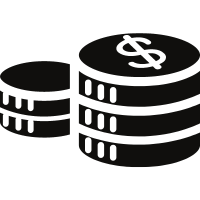
(b) Staff Training Costs
Enterprise businesses have employees spread across various demographics and educational backgrounds. Making it impractical to assume that everyone will be ready to start capitalizing on your SaaS development costs from the fly. Training your employees with a lower technical familiarity will cost you some extra bucks off your budget based on the number of employees you have to train.

(c) Updates
Based on the ever-evolving market trends & customer needs, you cannot keep your SaaS model the exact same for a long time, if you do one of your competitors will come up with a superior version of your app and you will inevitably lose your customer base.
To avoid this unwanted user base migration, you need to account for the cost of these post-deployment updates. This helps you keep your SaaS application up-to-date and improves user retention rates.

(d) Maintenance and Support
It is important to consider the maintenance charges while calculating the enterprise SaaS pricing as it is a recurring task meaning the business has to pay for these services as long as the SaaS application is operable.
Customer and employee support is a similar recurring service that is deployed to ease the user experience for the users. Although it’s a common sight to see businesses implement chatbots to answer the basic Q&As of customers, which has significantly dropped the business expenses relating to all sorts of support.
How to Figure out the Reasonable Design and Cost of Building a SaaS Product?
While developing a SaaS application it’s natural to get an intuition to get a feeling that every new feature that you see is useful for your business’s optimization. Stuffing every single feature into a single SaaS application makes the UI too complicated to be used by regular employees. The general rule of thumb before identifying the appropriate SaaS model would be to:
- Firstly, identify the genuine pain points that are directly affecting the productivity of your business.
- And secondly, install a SaaS solution on the pain points based on the nature of the identified issues.
Depending upon the type of issue your business has to deal with, you can choose between a vertical SaaS model or a horizontally scaling SaaS solution. In case your business needs to optimize an industry-specific issue or an issue that can be exclusive to your business specifically, then you should choose a vertical SaaS solution to ease up those pain points. However, if your business has a bunch of generic optimization issues and a general-featured SaaS solution will do the job just fine, then a horizontally scaling SaaS solution will be a better choice.
Choose BinaryFolks Value-For-Money SaaS Development Services
We covered all the primary factors that determine the price of a SaaS model, now let’s take a quick glance at what values can BinaryFolks add to the cost of developing your SaaS platform.
(1) Pay the Exact Price you Shake on, No Unwanted Surprises
Our SaaS consultants thoroughly evaluate your application specifications and customization requirements to give you a quote. Once we agree upon the price it remains fixed for the entire development process. We divide your project into a milestone-based format, and you pay for each milestone achieved within the discussed time frame.
(2) Get your Money’s Worth with BinaryFolks’ Team of SaaS Maestros
BinaryFolks’ team of SaaS developers have extensive experience in developing SaaS applications across multiple industries on every possible scale. Unlike other service providers, we are not focused on providing you with our services at a cheaper price. Our main goal is to provide you with a value-for-money experience.
(3) Let BinaryFolks Handle the Calculation for Absolutely No Charge!
By now you have an understanding of the fact that there are so many factors to account for while calculating the exact price for your solution model. In case you want to save yourself from the hassle, you can book a free consultation session with BinaryFolks! You can discuss the details of your SaaS project with our team, and we will get back to you with an estimate for absolutely no charge!
Conclusion
You are finally equipped with all the intel you will need to estimate the cost of building a SaaS project. Here’s a checklist for your reference in case you want to revisit the key points of this blog:
a. Primary factors that determine the SaaS development cost:
- Scalability of the Software
- UI/UX Design
- Technologies Being Used
- Security Levels
- Customizations
b. Different types of APIs that affect the pricing of a SaaS application when integrated:
- Simple APIs
- Semi-Complex APIs
- Complex APIs
c. Various complexities of a SaaS application that determines how expensive a SaaS model will be:
- Micro SaaS
- Basic SaaS
- Average SaaS
- Complex SaaS
d. Types of service providers that determine the cost of developing a SaaS platform:
- In-House Team
- Onshore or Local Service Providers
- Offshore Service Providers
- Freelancers
e. Post-deployment expenses can further inflate the price of the SaaS project
- Marketing and Customer Acquisition
- Staff Training Costs
- Updates
- Maintenance and Support


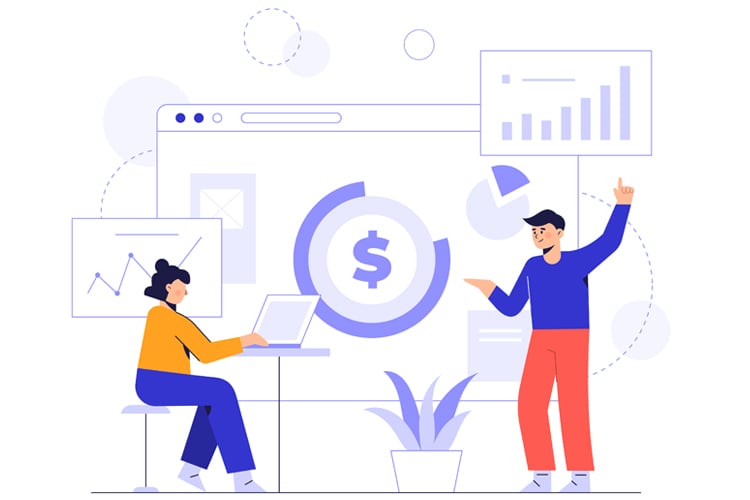

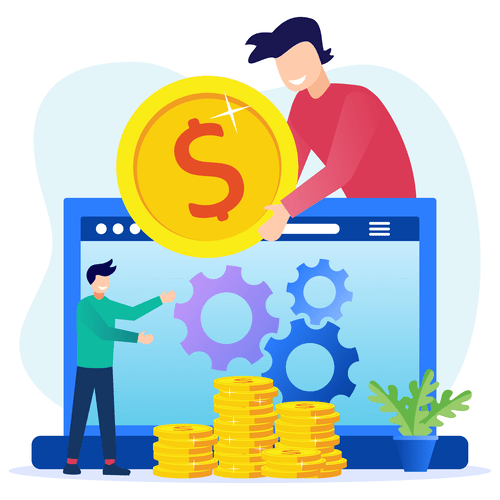
.png)
.png)
